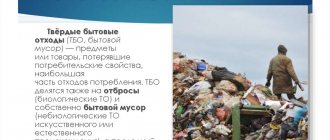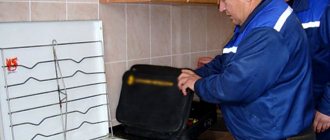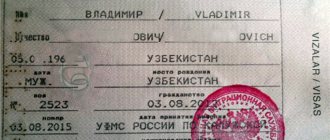Is this liquid household waste?
According to the Decree of the Government of the Russian Federation dated February 10, 1997 No. 155 “On approval of the rules for the provision of services for the removal of liquid household waste”
“liquid household waste” - household wastewater generated as a result of the life of the population and discharged into structures and devices that are not connected (technologically not connected) to the centralized drainage system and are intended for the reception and accumulation of wastewater.
Let's refer to the Federal Waste Classification Catalog (FKKO), section 7:
“WASTE DURING WATER SUPPLY, WATER DISPOSAL, ACTIVITIES FOR COLLECTION, PROCESSING, RECYCLING, DISPOSAL, AND WASTE DISPOSAL
(except for waters that are removed by treating them at treatment facilities and then sending them to the recycling water supply system or discharging them into water bodies)
Thus, wastewater is generated if water disposal occurs:
- through treatment facilities with further discharge into the circulating water supply system
- discharge into a water body
- through a centralized drainage system.
In other cases it is liquid household waste.
Lisichnikova Lyudmila
Ask a Question
There are a lot of articles on the Internet criticizing the method of classifying wastewater or waste depending on the method of disposal. Below in the article there are 2 clarifications on this issue.
Municipal liquid waste or sewage - explanations
MINISTRY OF NATURAL RESOURCES AND ECOLOGY OF THE RUSSIAN FEDERATION
LETTER
dated August 23, 2020 N 12-50/07137-OG
About handling liquid household waste
The classification of liquid household waste as wastewater or waste depends on the method of disposal.
If liquid fractions are removed by discharge into water bodies after appropriate treatment, they should be considered wastewater and their handling will be regulated by water legislation.
If such fractions are removed in another way that precludes their discharge into water bodies after appropriate treatment, such wastewater does not fall within the definition of wastewater in the terminology of the Water Code of the Russian Federation and should be considered liquid waste, the further treatment of which must be carried out in accordance with the law on production and consumption waste.
Letter of the Ministry of Natural Resources and Ecology of the Russian Federation dated July 13, 2020 No. 12/59/16226 On the classification of liquid fractions pumped out of cesspools as liquid household waste or wastewater
August 5, 2015
The Ministry of Natural Resources of Russia, in accordance with the letter of Rosprirodnadzor dated June 11, 2015 No. BC-03-04-28/9892 and letter dated April 21, 2015 No. 1075/02-23, considered a request to classify liquid fractions pumped out of cesspools as liquid household waste or wastewater and reports.
In accordance with Article 1 of the Federal Law of June 24, 1998 N 89-FZ “On Production and Consumption Waste”, production and consumption waste (hereinafter referred to as waste) refers to substances or objects that are generated in the process of production, performance of work, provision of services or in the process of consumption, which are removed, intended to be removed or subject to removal in accordance with this Federal Law.
According to paragraph 19 of Article 1 of the Water Code of the Russian Federation, wastewater - rain, melt, infiltration, irrigation, drainage water, wastewater from a centralized drainage system and other waters, the discharge (discharge) of which into water bodies is carried out after their use or the drainage of which is carried out from the drainage basin area.
In this regard, the classification of liquid fractions pumped out of cesspools as wastewater or waste depends on the method of their removal,
If liquid fractions pumped out of cesspools are removed by discharge into water bodies after appropriate treatment, they should be considered wastewater and their handling will be regulated by water legislation.
If such fractions are removed in other ways that exclude their discharge into water bodies, such wastewater does not fall within the definition of wastewater in the terminology of the Water Code of the Russian Federation and should be considered liquid waste, the further treatment of which must be carried out in accordance with waste legislation production and consumption.
Payment for removal of reinforced waste and wastewater disposal. The procedure and features of payment calculation. 2020
In this regard, fees for the collection and removal of liquid household waste cannot be calculated, as for public utilities, on the basis of consumption standards, or on the basis of metering devices.
The concept of sewerage service (utility service) is established in clause 4 of the Rules for the provision of utility services to owners and users of premises in apartment buildings and residential buildings, approved by Decree of the Government of the Russian Federation of May 6, 2011 No. 354 and is defined as the removal of household wastewater through centralized sewerage networks. That is, if your wastewater flows into a centralized sewer with access to a wastewater treatment plant, then you are using a public sewerage service.
All types of utilities are listed in Art. 154 of the Housing Code of the Russian Federation - this is cold water supply, hot water supply, water disposal, electricity supply, gas supply, heating. This list is exhaustive and is not subject to expanded interpretation.
WHO SET THE TARIFF AND HOW IS IT CALCULATED?
The procedure for calculating fees for utility services is established by Art. 157 of the Housing Code of the Russian Federation and is carried out based on the actual volume of consumed services, determined on the basis of meter readings. If there are no metering devices, then the cost of the service is calculated based on consumption standards per person.
The tariff for utility services is established by the authorized executive body of the Sverdlovsk region in the field of state regulation of prices (tariffs, rates, markups, markups, indices, rates, fees), which is the Regional Energy Commission of the Sverdlovsk Region. The same body sets standards for the consumption of utility services.
In accordance with clause 11 of the Rules for the maintenance of common property in an apartment building and the rules for changing the amount of payment for the maintenance and repair of residential premises in the case of provision of services and performance of management work, the collection and removal of liquid household waste is not a public service for drainage, maintenance and repair of common property in an apartment building of inadequate quality and (or) with interruptions exceeding the established duration, approved by Decree of the Government of the Russian Federation of August 13, 2006 No. 491, the service for the collection and removal of solid and liquid household waste is included in the maintenance work (services) common property of an apartment building.
WHY IS THE REMOVATION OF RECORDS CHARGED BASED ON THE AREA OF THE APARTMENT?
Article 158 of the Housing Code of the Russian Federation establishes that owners of premises in an apartment building are required to participate in the costs of maintaining the common property of an apartment building in proportion to their share in the common ownership of this property.
In turn, the share of each owner in the common property of an apartment building is proportional to the size of the premises owned (Article 37 of the Housing Code of the Russian Federation). In other words, the larger the area of the apartment, the greater the owner’s share in the common property, and accordingly, the greater the owner’s expenses for maintaining this common property. Therefore, the cost of housing services is calculated per square meter of owned premises.
The owners of premises who have installed individual cold water supply meters and those who do not have meters find themselves in an equally disadvantaged position. In accordance with the Federal Law of November 23, 2009 No. 261-FZ “On energy saving and increasing energy efficiency in the Russian Federation,” metering devices are installed to account for energy resources, which also include water transmitted and consumed using centralized water supply networks.
Therefore, accounting for water discharge into cesspools cannot be carried out according to meter readings. And accounting for the collection and removal of liquid household waste from a cesspool can be taken into account based on the number of cubic meters of waste actually removed from the pit. The calculation of the collection and removal service for a specific owner of a premises in an apartment building is as follows: the cost of the removed volume of reinforced waste for a certain period, divided by the area of all apartments and non-residential premises (excluding common areas) and multiplied by the area of a specific apartment (premises).
Needless to say, the cost of sewerage services is significantly cheaper than the collection and removal of liquid household waste. In the current conditions of the absence of local treatment facilities and the increase in water consumption due to the use of modern household appliances, an increase in the volume of waste removal is inevitable.
The district leadership has repeatedly considered the issue of repairing and increasing the capacity of existing treatment facilities. Currently, the municipality can only afford to work on preparing a project for the reconstruction of the wastewater treatment plant in the village of Beloyarskoye. In the future, the issue of the possibility of regional and federal co-financing of work through appropriate programs for the modernization of housing and communal services facilities will be explored.
Daria TITOVA, housing control specialist of the BGO Administration.
The Judicial Collegium for Civil Cases of the Omsk Regional Court, consisting of
Chairman: Ivolgina N.V.
judges of the Omsk Regional Court: Kanivets T.V., Mayera V.E.
under the secretary: V.V. Znamenshchikov
examined in open court the case on the cassation appeal of L.V. Voinova. on the decision of the Cherlaksky District Court of the Omsk Region dated October 13, 2010, which decided:
To satisfy the claim of the prosecutor of the Cherlaksky district of the Omsk region in the interests of Voinova L.V., Armakova G.A. to LLC "Temp" to recognize the actions as illegal, to impose the obligation to calculate the amount of utility bills based on the readings of the meter, to refuse."
Having heard the report of the regional court judge T.V. Kanivets, the judicial panel
The prosecutor of the Cherlaksky district of the Omsk region went to court in the interests of L.V. Voinova. and Armakova G.A. to Temp LLC to recognize the actions as illegal. In support of the claim, it is stated that Temp LLC is charged for utility services for sewerage according to the tariffs established by it. In accordance with legal requirements, fees must be calculated based on the readings of metering devices installed in citizens’ apartments. Voinova L.V. and Armakova G.A. the payment is made in accordance with meter readings, but the defendant sends claims for payment of debt for sewerage. He asked to recognize the actions of Temp LLC to charge fees for sewerage according to tariffs as illegal, and to impose the obligation to calculate the amount of utility bills based on the readings of the meter.
At the court hearing, the prosecutor did not support the stated demands, pointing out that the service for removal of liquid household waste is not a public service, and therefore, the amount of payment for it is not subject to state regulation and is established by the defendant.
Voinova L.V. and Armakova G.A. the claims were supported, explaining that the apartments they occupied only had cold water supply, and there was also a sewerage system through which water and liquid household waste flowed into a cesspool built for two apartment buildings. The waste removal service provides a public service for wastewater disposal, and therefore should be paid based on meter readings, and not for the actual number of trips of vehicles pumping and removing waste from the cesspool. It was noted that the cesspool is not completely sealed; rain, melt and other waters may enter it. The amount of water entering the cesspool is not taken into account.
Representative of Temp LLC Chekalkin S.I. He did not agree with the claim, noting that the organization does not provide public utilities, but provides a service for pumping and removal of liquid household waste, which is not subject to government regulation. There is a tariff for pumping and removal of one cubic meter. liquid household waste. Water used by the population, but not taken into account by metering devices in citizens’ apartments, as well as rain, melt and other water can get into the cesspool. In citizens' apartments, cold water supplied to citizens' apartments is accounted for, not water entering the cesspool.
This is interesting: There is no heating in the apartment due to the fault of the neighbors, what to do? — Forum Calculation of housing and communal services 2020
The court made the above decision.
In the cassation appeal of Voinova L.V. asks the court's decision to be quashed and the case to be remanded for a new trial. Indicates that waste through connected sewer pipes enters a cesspool, from where it is removed by the defendant's cars, which is another method of wastewater disposal, paid based on meter readings. Indicates that it is not obliged to pay for the pumping and removal of melt and rain water that ends up in a leaky cesspool.
After checking the case materials, discussing the arguments of the cassation appeal, listening to the representative of Voinova L.V. - Voinov V.S., who supported the complaint, having heard the conclusion of the prosecutor of the department of the prosecutor's office of the Omsk region G.A. Vershinina, who considered the court's decision to be left unchanged, the judicial panel does not find any grounds for canceling the court's decision.
In accordance with Part 2 of Art. 154 of the Housing Code of the Russian Federation, payment for residential premises and utilities for the owner of premises in an apartment building includes: payment for the maintenance and repair of residential premises, which includes payment for services and work on managing an apartment building, maintenance, current and major repairs of common property in apartment building; utility fees.
According to part 4 of the above norm, utility fees include fees for cold and hot water supply, sewerage, electricity, gas supply and heating.
By virtue of Part 1 of Art. 156 of the Housing Code of the Russian Federation, fees for the maintenance and repair of residential premises are set in an amount that ensures the maintenance of common property in an apartment building in accordance with the requirements of the law.
The rules for maintaining common property in an apartment building, approved by Decree of the Government of the Russian Federation dated August 13, 2006 N491, include the collection and removal of solid and liquid household waste as part of the maintenance of common property (clause 11).
Taking into account the above rules of law, the collection and removal of liquid sewage waste generated as a result of the activities of the residents of the house is an integral part of the maintenance of the common property of an apartment building.
As can be seen from the case materials, Voinova L.V. and Armakova G.A. live in apartments N_ and N_ in house N_ on the street. _ in r.p. Cherlak, Omsk region.
The residential building has cold water supply, but no hot water supply. The house has a sewerage system through which used water and liquid household waste flow into a specially equipped cesspool built for two apartment buildings. The plaintiffs have meters installed on their cold water supply pipes that record the amount of water consumed.
The removal of liquid household waste from the cesspool is carried out by Temp LLC under an agreement dated July 1, 2010, concluded with the residents of building N _, according to which Temp LLC undertook to provide the service for pumping and removal of liquid household waste by 10 KamAZ vehicle trips per month , the tank capacity of which is 9.5 cubic meters. The cost of one flight is 481 rubles.
In accordance with the calculation of Temp LLC, the cost of the service for pumping and removal of liquid household waste is per 1 cubic meter. for the population in 2010 is 50.59 rubles.
Refusing to satisfy the stated requirements for imposing the obligation to charge for the removal of liquid household waste based on the readings of the meter, the court of first instance correctly indicated that such a public service as sewerage, calculated according to the readings of the meter, to residents of house N_ on the street. _ in r.p. Cherlak does not appear, since the house does not have a centralized network connected to the sewer system of the apartment building, with the help of which it would be possible to provide this utility service.
All liquid household waste accumulates in an unsealed cesspool; Temp LLC provides the pumping and removal service of liquid household waste, the price of which is determined by agreement of the parties to the contract.
This conclusion of the court is based on the correct application of substantive law to disputed legal relations, taking into account the factual circumstances of the case. There are no grounds for canceling the court's decision based on the arguments of the cassation appeal.
The complaint's reference to the fact that waste through connected sewer pipes enters a cesspool, from where it is removed by the defendant's cars, which is another method of drainage, paid based on meter readings, is subject to rejection as erroneous.
In accordance with the Decree of the Government of the Russian Federation dated May 23, 2006 N307, the Rules for establishing and determining standards for the consumption of utility services were approved, which determine the procedure for establishing standards for the consumption of utility services (cold and hot water supply, sewerage, electricity supply, gas supply, heating) and establish requirements for their formation.
In accordance with paragraph 3 of these Rules, public services are understood as the activities of the public service provider to provide citizens living in a managed residential building with, among other things, cold and hot water supply, as well as sanitation.
Clause 6 of the Rules establishes the composition of utility services provided to the consumer depending on the degree of improvement of the apartment building or residential building, which means the presence in the apartment building or residential building of in-house engineering systems that allow the provision of utility services to the consumer.
In accordance with the above-mentioned paragraph of the Rules, water disposal is the removal of domestic wastewater from a residential premises through the connected network.
Consequently, the provision of sewerage services is possible in the case of connecting the in-house engineering systems of a residential building to the engineering network of the utility service provider.
Since in the residential building N_ on the street. _ in r.p. Cherlak in-house utility networks are not connected to the utility networks of the utility service provider, Temp LLC is not the provider of this service and carries out the removal of liquid household waste from the cesspool, the court of first instance came to a reasonable conclusion that the services provided by the company do not correspond to the concept of wastewater disposal, defined Rules, due to the lack of an attached network.
The cassator's argument that the service for removal of liquid household waste should be paid based on the readings of the meter is also untenable.
The meters available in the plaintiffs' apartments reflect the amount of cold water consumed by citizens, but do not reflect the amount of liquid household waste removed from the apartments.
According to clause 7 of the Rules for the provision of utility services, approved by Decree of the Government of the Russian Federation N307 of May 23, 2006, utility services are provided to consumers on the basis of an agreement containing the conditions for their provision and concluded by the contractor with the owner of the residential premises.
If the owners of premises in an apartment building have not concluded an agreement with the contractor on sewerage, then they can enter into such an agreement directly with the water and wastewater services organization. In this case, the resource supplying organization is responsible for drainage at the border of networks that are part of the common property of the owners of premises in an apartment building or belonging to the owners of residential buildings, with public infrastructure systems.
Owners of premises in an apartment building and owners of residential buildings pay fees for wastewater services provided based on the readings of metering devices installed at the border of networks that are part of the common property of the owners of premises in an apartment building or belonging to the owners of residential buildings, with utility infrastructure systems, unless otherwise established by the legislation of the Russian Federation.
This is interesting: The procedure for calculating heating adjustments - Forum Housing and Communal Services Calculation 2020
The total volume of discharged wastewater, determined based on the readings of collective (common building) metering devices, is distributed among the indicated owners in the manner established by clause 21 of the Rules for the provision of utility services, and if there are individual or common (apartment) metering devices in all premises of an apartment building - in proportion to their testimony.
Based on the above provisions of the law, it follows that payment for sewerage services, based on the readings of metering devices, is possible if there are collective (communal) metering devices installed at the border of the networks that are part of the common property of the owners of premises in an apartment building.
In house N_ on the street. _ in r.p. Cherlak, Omsk Region, there are no communal (collective) metering devices installed for wastewater disposal, therefore, payment for the service for removal of liquid household waste cannot be calculated based on the readings of individual metering devices for the flow of cold water into the premises.
At the court hearing, it was established that not only liquid household waste enters the cesspool, but also other wastewater from the activities of citizens (water from the heating system, from cold water supply pipes in apartments not equipped with metering devices, etc.) and natural phenomena (rain, melt and other water).
This entire volume of wastewater, including that not taken into account by installed cold water meters, is pumped out by the defendant's cars.
The cassator's reference to the fact that the residents of the house are not obliged to pay for the removal of rain and wastewater that accumulates in an unsealed pit; the responsibility for sealing the pit lies with the manager, therefore Temp LLC must make demands specifically on the management company, cannot be taken into account . A cesspool belongs to the common property of the owners of premises in an apartment building, who, by virtue of the law, are responsible for the safety of this property. If the management company provides inadequate services for the repair and maintenance of the common property of an apartment building, the residents of the building are not deprived of the right to present the management company with appropriate demands, including for sealing the cesspool, if these works are not capital works.
The residents of the house entered into an agreement with Temp LLC, according to which Temp LLC is obliged to provide services for pumping and removal of liquid household waste, regardless of the components of the waste. The amount of payment for pumping and removal of reinforced waste from cesspools of open and closed types of non-centralized sewerage is set according to the tariffs of the contractor in effect at the time of the consumer’s application.
The cassator's reference to the fact that according to the agreement Voinova L.V. assumed an obligation to pay according to meter readings, is insolvent, since when signing the agreement Voinova L.V. I personally added the phrase “by the meter” next to the signature; however, the change in the payment procedure from payment according to the tariff to payment by the meter was not agreed upon with the contractor Temp LLC, so payment by the meter is not considered established.
When considering a dispute, the court correctly determined the circumstances that are important for its resolution, and correctly applied the rules of substantive and procedural law. Since the court verified all the arguments of the parties, gave a proper assessment to all the evidence presented in the case, and made a legal and justified decision, there are no grounds for satisfying the complaint.
Having considered the cassation appeal within the limits of the arguments contained in it, the judicial panel does not find any grounds for canceling the court decision.
Guided by Art. 361, 362, 366 Code of Civil Procedure of the Russian Federation, judicial board
the decision of the Cherlaksky District Court of the Omsk Region dated October 13, 2010 was left unchanged and the cassation appeal was not satisfied.
To view the current text of the document and obtain complete information about the entry into force, changes and procedure for applying the document, use the search in the Internet version of the GARANT system:
Problems associated with the qualification of relations for the removal of household wastewater from septic tanks became relevant in 2010, when, in accordance with Federal Law dated December 30, 2004 No. 210-FZ “On the basis for regulating tariffs of public utility organizations” (as amended on July 27, 2004) .2010, hereinafter referred to as Law No. 210-FZ), the powers to regulate tariffs for public utility organizations were transferred to the level of the constituent entity of the Russian Federation.
Problems associated with the qualification of relations for the removal of household wastewater from septic tanks became relevant in 2010, when, in accordance with Federal Law dated December 30, 2004 No. 210-FZ “On the basis for regulating tariffs of public utility organizations” (as amended on July 27, 2004) .2010, hereinafter referred to as Law No. 210-FZ), the powers to regulate tariffs for public utility organizations were transferred to the level of the constituent entity of the Russian Federation.
Until August 13, 2010, tariffs for wastewater disposal in the presence of export sewerage were approved by local governments within the framework of their powers. However, the constituent entities of the Russian Federation doubted the legality of approving such tariffs for 2011, or more precisely, the correctness of taking into account the costs of transporting wastewater from septic tanks to sewer networks or treatment facilities. In addition, services for the removal of household wastewater from septic tanks are sometimes classified as services for the removal of household liquid waste (hereinafter referred to as MWW). The authors of this article provide clarification on these issues.
You can understand the topic in more detail at our advanced training courses:
Wastewater collection and treatment
· collection and disposal of domestic wastewater
(including individual users), as well as rainwater
through sewer networks and collectors;
their transportation by tanks and other vehicles , processing and disposal;
· wastewater treatment using physical, chemical and biological methods, such as dilution, filtration, sedimentation, and other methods;
· maintenance and cleaning of sewer systems;
· emptying and cleaning of cesspools, sedimentation tanks and septic tanks
,
sewage wells;
maintenance of chemically sterilized toilets.
Activities for the collection and disposal of wastewater can be carried out both through sewer networks and by transportation by vehicles.
As follows from the above provisions of the All-Russian Classification of Types of Economic Activities, activities for the collection and disposal of wastewater can be carried out through sewer networks or by transportation by tanks or other vehicles, including as a result of cleaning cesspools, settling tanks and septic tanks.
According to sub. “d” clause 11 of the Rules for the maintenance of common property in an apartment building, approved. By Decree of the Government of the Russian Federation dated August 13, 2006 No. 491 (hereinafter referred to as Rules No. 491), the collection and removal of solid waste and liquid waste are included in the maintenance of common property in an apartment building (hereinafter referred to as MKD). Consequently, the costs of their implementation by virtue of paragraphs. 1 and 2 tbsp. 154 of the Housing Code of the Russian Federation are included in the fee for the maintenance and repair of common property in apartment buildings.
Utilities wastewater services
The procedure for providing utility services to citizens in accordance with paragraph 1 of Art. 157 of the Housing Code of the Russian Federation is regulated by the Rules for the provision of public services to citizens, approved. Decree of the Government of the Russian Federation dated May 23, 2006 No. 307 (hereinafter referred to as Rules No. 307). Public sewerage service is referred to as drainage
domestic wastewater
from residential premises
through the connected network
(clause 6 of Rules No. 307).
In the absence of metering devices, the amount of household wastewater is determined based on the volume of hot and cold water used by consumers for domestic needs in accordance with clause 28 of the Rules for establishing and determining utility service consumption standards, approved. Decree of the Government of the Russian Federation of May 23, 2006 No. 306 (hereinafter referred to as Rules No. 306). This is interesting: Formula No. 12 Calculation of fees for hot water supply at a single service station in the presence of a common house meter, 2020
According to clause 6 of Rules No. 307, the composition of utility services provided to the consumer depends on the availability
relevant
in-house engineering systems.
Thus, the provision of sewerage services implies
the presence of a sewer network connected to the residential premises
for the removal of domestic wastewater.
In all sewer houses,
this condition is met, therefore, their residents
must be provided with public
sewerage . The responsibilities of the service provider include ensuring proper maintenance of the in-house sewer system and the uninterrupted removal of wastewater from the residential premises.
The method of ensuring the provision of this service and the procedure for determining the amount of payment depend on the conditions for connecting intra-house networks to the public sewerage system (infrastructure). Let's consider these conditions.
If intra-house networks are connected to the public sewer system
, the contractor (in the case of direct management of the apartment building, this is the owner) enters into an agreement on the reception (discharge) of wastewater with the organization that performs such functions and is responsible for the regime and quality of wastewater disposal at the border of the networks that are part of the common property of the owners of the premises in the house, with public infrastructure systems.
.
. . The FULL text of the article can be read in the May issue of the magazine “Housing and Public Utilities: Journal of Managers and Chief Accountants”
Specialists from the Department of Tariff Policy, Energy and Housing and Communal Services of the Yamal-Nenets Autonomous Okrug remind residents of the Autonomous Okrug about the changes that have occurred in the provision and charging of fees for the service of collection and removal of domestic wastewater (WWW). The fact is that, according to the Decree of the Government of the Russian Federation of April 3, 2013 No. 290 “On the minimum list of services and works necessary to ensure proper maintenance of common property in an apartment building, and the procedure for their provision and implementation”, the service for the collection and removal of reinforced waste from septic tanks located in the local area are included in the list of works and services for the maintenance of other common property in an apartment building. These changes apply to the relations of executors of housing management (MC, HOA) under agreements concluded after April 3, 2013.
Specialists of the industry department note that in connection with the above changes, residents of the Autonomous Okrug have a number of questions. The most common question is: “Is septic tank maintenance included in the price of housing services?”
Answering this question, experts refer to Resolution No. 290, which specifies the minimum list of services and work necessary to ensure proper maintenance of common property in an apartment building, including:
— checking and ensuring the operability of local local treatment facilities (septic tanks) and yard toilets;
— carrying out deratization and disinfestation of premises that are part of the common property in an apartment building, disinfection of septic tanks;
— removal of domestic wastewater from septic tanks located in the local area.
Thus, the fee for the maintenance of common property in an apartment building should be determined taking into account the costs of the above types of work.
Another most frequently asked question: “Is it possible to include the costs of major repairs of septic tanks in the full cost of services for pumping out and removing solid waste?”
Experts from the Department of Tariff Policy and Energy and EKK Yamalo-Nenets Autonomous Okrug answer: “In accordance with Article 158 of the Housing Code of the Russian Federation, the owner of premises in an apartment building is obliged to bear the costs of maintaining the premises belonging to him, as well as to participate in the costs of maintaining common property in an apartment building in proportion to his share in the right of common ownership of this property by paying fees for the maintenance and repair of residential premises, contributions for major repairs. Payment of additional contributions intended to finance the costs of major repairs of common property in an apartment building is carried out by the owners of premises in an apartment building if the owners of premises in an apartment building decide to carry out major repairs of common property in an apartment building.
Thus, the costs of major repairs of septic tanks cannot be included in the full cost of services for the removal of reinforced waste and, accordingly, in the cost of services for maintaining the common property of an apartment building.
Owners refuse to make a decision on including the cost of removal of concrete waste in the housing management system
The amount of payment for the maintenance and repair of residential premises for owners of premises who have chosen a management organization to manage an apartment building is decided on the basis of a decision of the general meeting of owners of premises in such a building, taking into account the proposals of the management organization (clause 31 of Rules No. 491).
Thus, the decision of the general meeting of premises owners to determine the amount of payment for the maintenance and repair of residential premises must be made taking into account the proposals of the management organization and cannot contradict the norms of current legislation.
In accordance with paragraph 34 of Rules No. 491, if the owners of the premises have not decided on the method of managing the apartment building, the amount of payment for the maintenance and repair of residential premises paid by the owners of the premises is established by the local government body based on the results of an open competition held in the prescribed manner, equal to the price of the management agreement for an apartment building.
The issue of removing reinforced waste from a septic tank used by several apartment buildings
According to Rules No. 491 (paragraph 2 of clause 5), the common property of an apartment building includes an in-house engineering drainage system, consisting of sewer outlets, fittings (including bends, transitions, pipes, audits, crosses, tees), risers, plugs, exhaust pipes, drainage funnels, cleanouts, branches from risers to the first butt joints, as well as other equipment located in this system.
The composition of common property is determined by the owners of premises in an apartment building in order to fulfill the obligation to maintain common property (clause 1 of Rules No. 491).
Thus, the issue of removing reinforced waste from a septic tank used by several apartment buildings must be resolved by a general meeting of the owners of these buildings. If the owners of several apartment buildings at a general meeting decide that this septic tank is the common property of their houses, then the costs of its maintenance and removal of reinforced waste materials should be distributed in proportion to the occupied area of all residential premises of these houses.
A septic tank located outside the local area of an apartment building is also the common property of the apartment building; accordingly, the service for removing reinforced waste from this septic tank can be included in the list of works and services for the maintenance of other common property of this apartment building.
If several septic tanks are used to service one apartment building , the costs of their maintenance and removal of reinforced waste are included in the cost of 1 m2 of housing service.
If in an apartment building that is not equipped with an intra-building sewerage system and is not connected to the networks of a centralized sewerage system, some of the apartments are equipped with septic tanks for individual use (which are not the common property of the apartment building), then the owners of such apartments independently maintain these septic tanks and conclude agreement for pumping and removal of reinforced waste with organizations engaged in this type of activity. The costs of maintaining and removing reinforced waste from such septic tanks are not included in the cost of housing services for this apartment building.
Source: Department of Tariff Policy, Energy and Housing and Communal Services of the Yamal-Nenets Autonomous Okrug
»
Great article 0
Waste from septic tanks - liquid household waste from cesspools
Most often, the issue of classification as liquid household waste or wastewater concerns wastewater (waste) that is pumped out of septic tanks.
In this case, if waste from a septic tank is transferred to a treatment plant for further treatment, then it is wastewater.
If waste from a septic tank is transferred to a landfill or disposed of, it is waste.
What should the owners of unsewered apartments do? Conclude an agreement for the removal and disposal of household waste from cesspools. Each apartment building has its own cesspool, since there is no connection to the central sewerage network. Therefore, pumping and removal of liquid household waste from cesspools must be carried out by specialized transport for disposal in a specially designated place.
Liquid household waste: list and FKKO
List of reinforced waste products presented in the Federal Waste Classification Catalog (FKKO). All waste belongs to hazard class 4.
Municipal liquid waste (LMW) is generated from the operation of residential facilities and enterprises that are not equipped with a wastewater disposal system and facilities. Domestic and fecal wastewater is collected and accumulated in special structures - tanks and settling tanks (cesspools). The release of household and fecal wastewater from cesspools into the environment must be prevented. Waste generated from pumping and cleaning cesspools is presented









